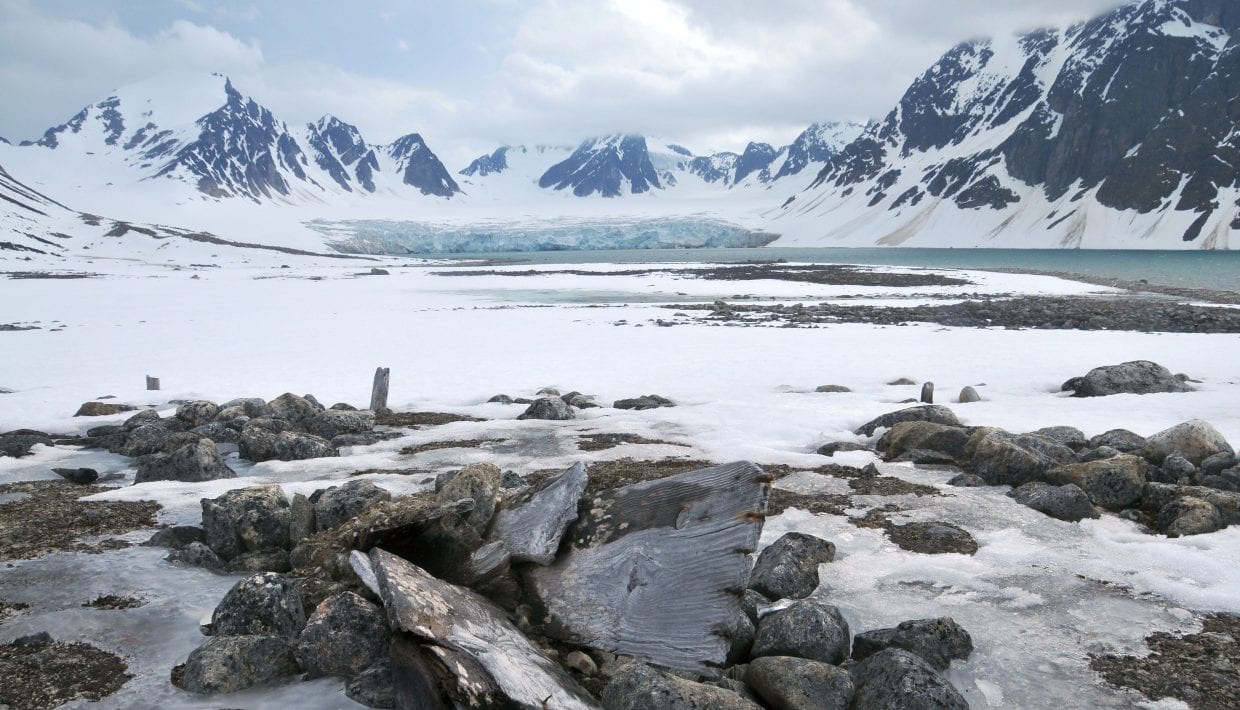
Archaeologists Race Against Time to Save Arctic Sites from Climate Change
New journal paper offers first synthesis of climate change effects on Arctic sites.
Press release:
An international group of archaeologists—in a race against time to preserve, or at least document, artefacts and sites threatened by coastal erosion, melting glaciers and permafrost thaw—have published the first synthesis of how climate change is affecting Arctic archaeological sites in the journal Antiquity.
The group of experts, associated with universities, governments and museums and the US National Park Service from the U.S., Canada, Denmark, Norway, Russia and Scotland, combed through national cultural heritage databases to determine that at least 180,000 archaeological sites exist in the Arctic.
Arctic sites are lost faster than elsewhere
These sites are being lost to climate change faster than sites elsewhere, the authors say, because the Arctic is warming much faster than the global average and the sites largely contain organic artefacts—items made out of wood, bone, and ivory, and even in some cases intact human and animal remains. When organic material melts out of frozen ground or a glacier or it is suddenly exposed to oxygen and decomposes extremely quickly as a result. Studies indicate warming air & soil temperatures could further accelerate decay rates. Many sites and the artefacts they contain are also being lost to coastal erosion,
In addition, as the sites become more exposed and accessible, the archaeologists have seen looting increase in some places. For example, one of the paper’s authors, Vladimir Pitulko, an archaeologist at the Russian Academy of Sciences, has reported on sites in northeast Siberia where ivory hunters have set up camps using high-pressure water pumps to remove the ivory tusks from woolly mammoths melting out of the permafrost. The ivory is sold on the black market.
Contact:
For contact information for the authors, or to interview co-author Vibeke Vandrup Martens, researcher at the Norwegian Institute for Cultural Heritage Research, www.niku.no, please contact Thomas Wrigglesworth at thomas.wrigglesworth@niku.no.
The Arctic coastline is on the front lines of climate change
Shorter winters and shrinking winter sea ice along the coast has caused the shoreline to erode faster than almost anywhere else in the world. Locals and tourists walking along Alaska’s eroding coastline, for example, are increasingly likely to remove unearthed artefacts to pocket or sell. Anne Jensen, a paper co-author at the University of Alaska Fairbanks, has been working to protect what’s left of Utqiagvik on the North Slope of Alaska and other vanishing sites. Jensen began a major rescue dig at the fast-eroding archaeological site of Walakpa in the summer of 2016 after villagers alerted her that people were removing items from a newly uncovered site there.
Meanwhile, paper co-author and organizer of the paper Jørgen Hollesen, senior researcher at the National Museum of Denmark, has done eight years of fieldwork in Greenland and has described coming across treasure troves of newly exposed material which are at risk of decay and loss. In south Greenland, Hollesen reports bones in Viking middens (household waste piles) that have turned to mush since the 1940s, and kayaks, mummies and hunting implements from the Thule Culture (predecessors of today’s Inuit) made from organic materials, that were in good shape in the 1970’s have almost completely rotted since then due to the warming climate.
While some work is underway to protect sites—including Canada Bay fur trading camps, British forts and Viking sites buckling under thawing permafrost—in many places the only solution is to mount urgent “rescue digs” to recover artefacts that would otherwise be lost forever.
Arctic sites must be prioritized
The paper calls for the archaeological community to urgently assess and prioritize Arctic sites with the goal of directing limited resources to the most important places.
– The scale of the climate threat to Arctic archaeology is truly stunning. Every summer, archaeologists are documenting heart-breaking new losses caused by accelerating coastal erosion and permafrost thaw” says paper co-author, Adam Markham, deputy director of the Climate and Energy Program at the Union of Concerned Scientists www.ucsusa.org.
– Our estimate of 180,000 archaeological sites in the Arctic is almost certainly an underestimate, and with rapid, human-caused climate change, many sites or the artefacts they contain, will be lost before they have been discovered. The extraordinary archaeological sites of the Arctic have been preserved in the frozen ground, in many cases for tens of thousands of years, and they are helping us to piece together the story of humankind. But now we face catastrophic losses of cultural heritage, that once gone, is gone forever.
Reference
Hollesen, J. et al (2018). Climate change and the deteriorating archaeological and environmental archives of the Arctic. Antiquity, 92(363), 573-586. doi:10.15184/aqy.2018.8

